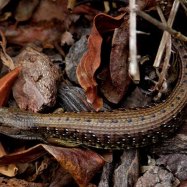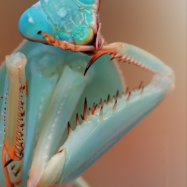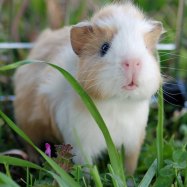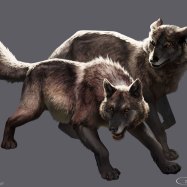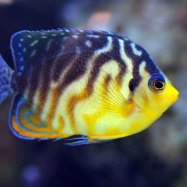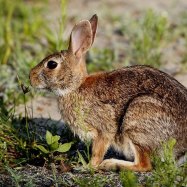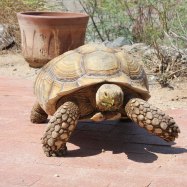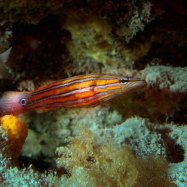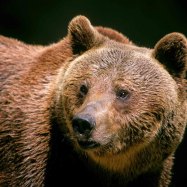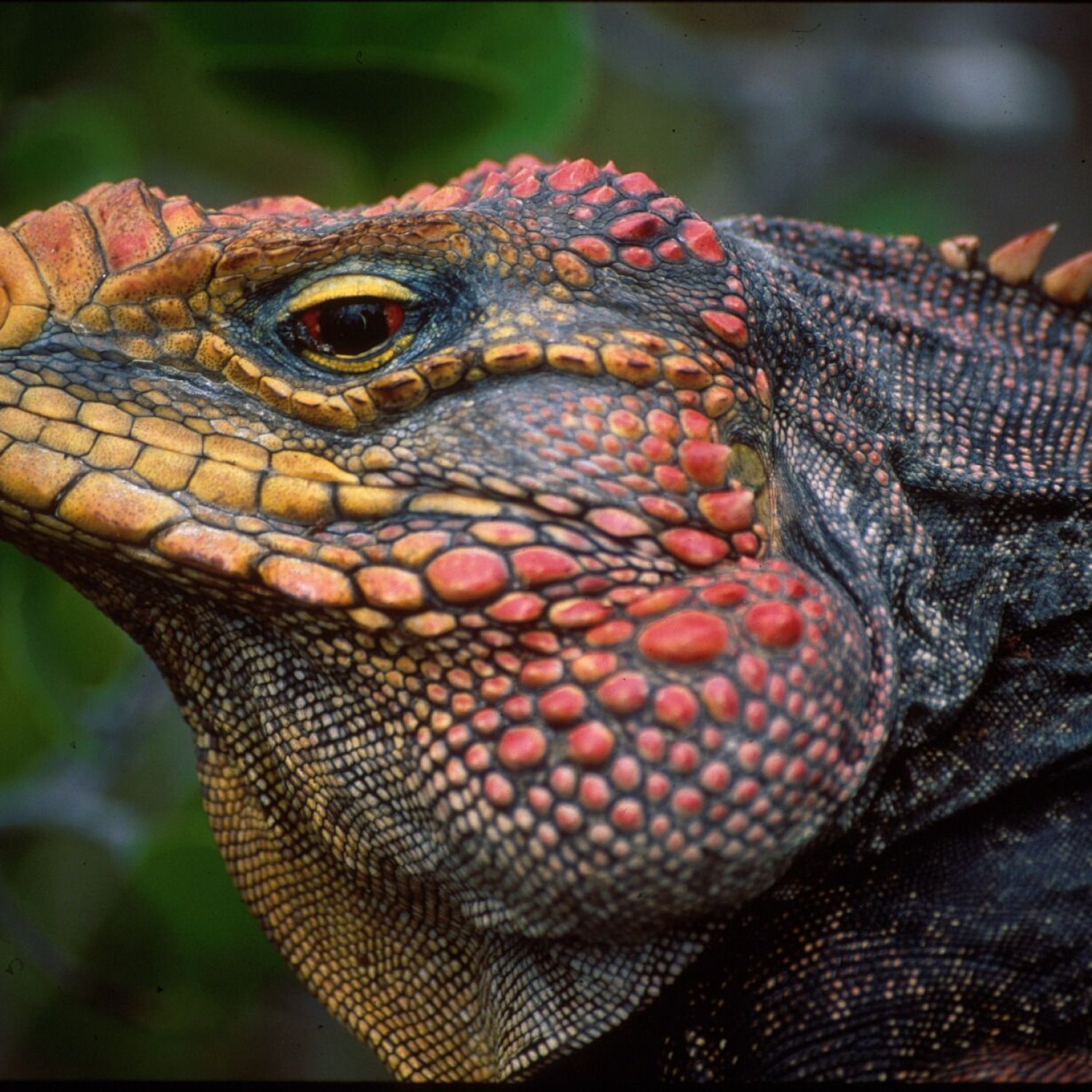
Jamaican Iguana
Up to 1.5 meters (4.9 feet)
Meet the Jamaican Iguana, a large and robust member of the Iguanidae family. Found primarily in the Hellshire Hills of Jamaica, these reptiles can grow up to 1.5 meters or 4.9 feet in length. Take a trip to Jamaica to catch a glimpse of this unique and fascinating creature in its natural habitat. #JamaicanIguana #Jamaica #HellshireHills #Iguanidae #Reptile #Nature #Wildlife
Animal Details Summary:
Common Name: Jamaican Iguana
Kingdom: Animalia
Habitat: Dry forests, coastal thickets
The Majestic Jamaican Iguana: A True Survivor in the Land of Reggae
In the lush and vibrant land of Jamaica, there lies a hidden gem – the Jamaican Iguana, also known as Cyclura collei in the scientific world. This impressive creature is not just a mere reptile, but a symbol of resilience and hope for conservation efforts. With its majestic appearance and fascinating survival story, the Jamaican Iguana is a must-see for any nature lover. So, let's dive deeper into the world of this magnificent creature and discover what makes it so unique Jamaican Iguana.A Species on the Brink of Extinction
Believed to be extinct for over 40 years, the Jamaican Iguana was rediscovered in 1990 by researchers on the Hellshire Hills in Jamaica. This remarkable discovery was a ray of hope for the conservationists who were working tirelessly to save this species from complete extinction. With only 50 individuals left in the wild, the Jamaican Iguana was listed as critically endangered by the International Union for Conservation of Nature (IUCN).A True Survivor in the Face of Adversity
The Jamaican Iguana has faced numerous challenges that threatened its existence, but it has managed to survive and thrive against all odds. The primary reason for its decline was the introduction of non-native species like the mongoose and rats, which preyed on the iguana's eggs and young. In addition, the loss of its natural habitat due to human activities such as deforestation further intensified its plight.The Efforts to Save the Jamaican Iguana
Fortunately, the Jamaican Iguana caught the attention of conservationists, and they immediately sprang into action to save this unique species from extinction. The first step was the removal of the invasive species from the iguana's habitat. This was a challenging task that required a coordinated effort from the government, local communities, and conservation organizations Japanese Rat Snake.Moreover, a captive breeding program was established in 1995 to breed these iguanas in a safe and controlled environment. This program has been critical in increasing the population of the Jamaican Iguana, with over 200 individuals currently living in captivity. Thanks to these efforts, the IUCN has downgraded the status of the Jamaican Iguana from critically endangered to endangered, a glimmer of hope for this fascinating species.
The Anatomy and Physical Characteristics of the Jamaican Iguana
The Jamaican Iguana is a large and robust reptile, with a body length of up to 1.5 meters or 4.9 feet, making it one of the largest iguana species in the world. Its appearance is striking, with its medium to dark gray coloration and a light brownish-gray head. It also has a prominent dewlap (a skin flap under its chin), which it uses to regulate its body temperature and display during courtship or territorial displays.Apart from its impressive size and appearance, the Jamaican Iguana has other unique physical features. Its tail is incredibly powerful and serves as a defense mechanism against predators. When threatened, the iguana can lash out its tail at high speeds, delivering a powerful blow that can potentially injure its attacker. This gives the Jamaican Iguana an advantage against predators and further showcases its survival skills.
The Diet and Habitat of the Jamaican Iguana
Being a herbivorous species, the Jamaican Iguana mostly feeds on leaves, flowers, fruits, and other plant materials. Its diet is crucial for the ecosystem as it helps in seed dispersal, ensuring the growth of new vegetation in its habitat. This makes the Jamaican Iguana a vital species for maintaining a healthy balance in the ecosystem.As for its habitat, the Jamaican Iguana can be found in dry forests and coastal thickets on the Hellshire Hills in Jamaica. These areas provide the necessary shelter and food for their survival. However, the destruction of their habitat remains a significant threat to their existence, making conservation efforts even more critical.
The Importance of the Jamaican Iguana to Jamaican Culture
Aside from its significant role in the ecosystem, the Jamaican Iguana holds a special place in Jamaican culture and history. It is considered the national animal of Jamaica and has been depicted on the country's postage stamps and coins. This highlights the importance of the Jamaican Iguana to the people of Jamaica and their rich cultural heritage.Why You Should Visit the Jamaican Iguana
If you're planning a trip to Jamaica, make sure to include a visit to the Hope Zoo, located in Kingston, to see the Jamaican Iguana. This zoo houses the largest captive population of this species, and you can learn more about their conservation efforts and how you can contribute to it. Moreover, you can also support local eco-tourism initiatives that promote responsible and sustainable wildlife viewing in their natural habitat.Another reason to visit the Jamaican Iguana is the fascinating experience of witnessing a species on the brink of extinction and how it has managed to survive against all odds. It's a true testament to the incredible resilience and adaptability of animals, and it will leave you in awe and wonder.
Final Thoughts
The Jamaican Iguana is a true survivor, and its story is a shining example of how conservation efforts can make a significant impact in saving a species from extinction. It is a reminder of the importance of preserving biodiversity and the need to reduce the threats to our natural world. So, let us continue to spread awareness and support conservation efforts to ensure that the Jamaican Iguana continues to thrive for future generations to witness and admire its beauty.

Jamaican Iguana
Animal Details Jamaican Iguana - Scientific Name: Cyclura collei
- Category: Animals J
- Scientific Name: Cyclura collei
- Common Name: Jamaican Iguana
- Kingdom: Animalia
- Phylum: Chordata
- Class: Reptilia
- Order: Squamata
- Family: Iguanidae
- Habitat: Dry forests, coastal thickets
- Feeding Method: Herbivorous
- Geographical Distribution: Jamaica
- Country of Origin: Jamaica
- Location: Jamaica, primarily in the Hellshire Hills
- Animal Coloration: Medium to dark gray with a light brownish-gray head
- Body Shape: Large, robust
- Length: Up to 1.5 meters (4.9 feet)
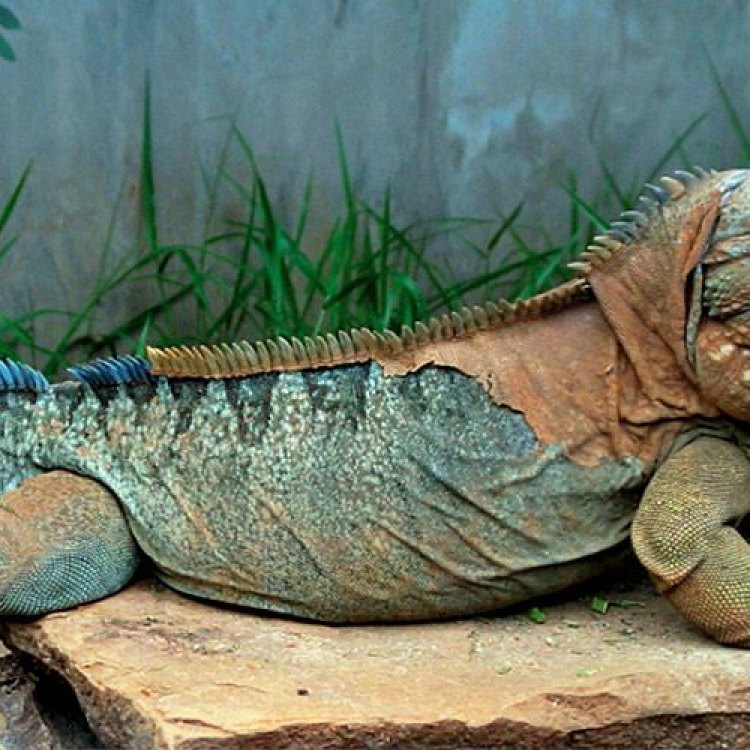
Jamaican Iguana
- Adult Size: 60-75 cm (23.6-29.5 inches)
- Average Lifespan: Up to 20 years in the wild
- Reproduction: Sexual
- Reproductive Behavior: Mating occurs between January and February
- Sound or Call: Males produce a series of clicking sounds
- Migration Pattern: Non-migratory
- Social Groups: Solitary, but may form small groups during mating season
- Behavior: Diurnal, active during the day
- Threats: Habitat loss, predation by mammals and birds, illegal collection
- Conservation Status: Critically endangered
- Impact on Ecosystem: Important for seed dispersal
- Human Use: Illegal pet trade
- Distinctive Features: Long tail, bumpy spines along the back
- Interesting Facts: Jamaican iguanas are one of the rarest lizards in the world
- Predator: Feral mammals, birds of prey
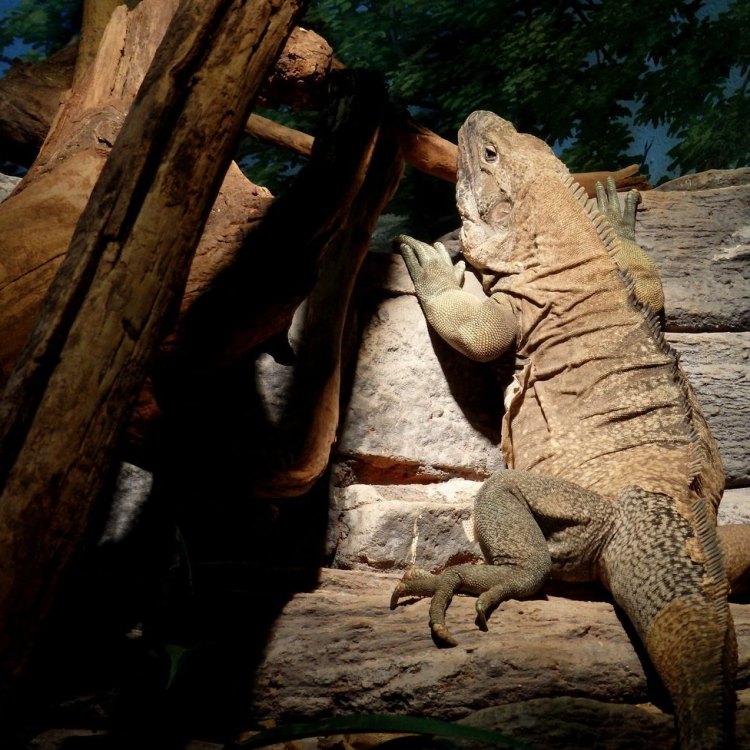
Cyclura collei
The Endangered Jamaican Iguana: An Icon of Resilience and Threat
The tropical island of Jamaica is known for its stunning beaches, vibrant culture, and delicious cuisine. But hidden within the lush rainforests and rugged terrain is a rare and elusive creature – the Jamaican iguana. This iconic reptile, also known as the Jamaican rock iguana, has captured the hearts of many with its distinct features and resilient nature.The Jamaican iguana (Cyclura collei) is a large lizard that can grow up to 60-75 cm (23 PeaceOfAnimals.Com.6-29.5 inches) in length. With a lifespan of up to 20 years in the wild, these reptiles have been roaming the island for centuries, playing a crucial role in the ecosystem. However, their survival is now threatened, and they are listed as critically endangered on the IUCN Red List.
Reproduction is a crucial aspect of any animal species, and the Jamaican iguana is no exception. These reptiles reproduce sexually and have a unique mating behavior. Mating occurs between January and February, during which males produce a series of clicking sounds to attract females. Once the female has selected her mate, they will engage in a dance-like courtship dance before copulation.
Despite their large size and striking appearance, Jamaican iguanas are predominantly solitary creatures Jack Russells. They spend most of their days basking in the sun and foraging for food. However, during the breeding season, which falls between January and February, they may form small groups to participate in the reproductive process.
These diurnal lizards are active during the day, basking in the warm Caribbean sun and seeking shade in the heat of the day. They use their strong legs and sharp claws to climb trees and rocks, and their long tails for balance. The bumpy spines along their back are another distinctive feature, helping them to blend into their rocky habitats.
As with many endangered species, Jamaican iguanas face multiple threats to their survival. The primary threat is habitat loss due to deforestation, urbanization, and agriculture. These activities have significantly reduced the population of Jamaican iguanas, as their natural habitat is destroyed. In addition, feral mammals and birds of prey, such as cats and hawks, are also significant predators of these lizards.
The Jamaican iguana also faces another threat – the illegal pet trade. Although it is a violation of national and international laws, many people continue to capture these lizards for the exotic pet market. This, coupled with their slow reproductive rate, further jeopardizes their already dwindling numbers.
The critically endangered status of the Jamaican iguana has not gone unnoticed by conservationists and researchers. Numerous efforts have been made to protect and conserve this unique species. These include setting up breeding programs, establishing protected areas, and educating local communities about the importance of preserving these lizards and their habitats.
One crucial role that the Jamaican iguana plays in its ecosystem is seed dispersal. As omnivores, they consume a variety of fruits, flowers, and leaves, and the seeds they ingest are spread throughout the forest, allowing for the growth and regeneration of the rainforest. This vital role in the ecosystem highlights the impact of their declining population and the need for conservation efforts.
Sadly, many human activities have contributed to the decline of Jamaican iguanas, and it is our responsibility to take action and ensure the survival of this iconic species. The Jamaican government has implemented strict laws protecting these lizards and their habitats, and the involvement of local communities in conservation efforts is crucial for their success.
Despite their numerous threats, the Jamaican iguana has shown remarkable resilience, adapting to the changing landscapes and finding ways to survive. This resilience makes them a symbol of hope for the future, reminding us of the importance of preserving and protecting the natural world around us.
In conclusion, the Jamaican iguana may be one of the rarest lizards in the world, but it is also a testament to the resilience of nature. It is our duty to ensure that these fascinating creatures continue to thrive on the island of Jamaica, and that future generations will have the opportunity to witness their beauty and importance in the ecosystem. Let us come together to protect and appreciate this endangered species, before it's too late.
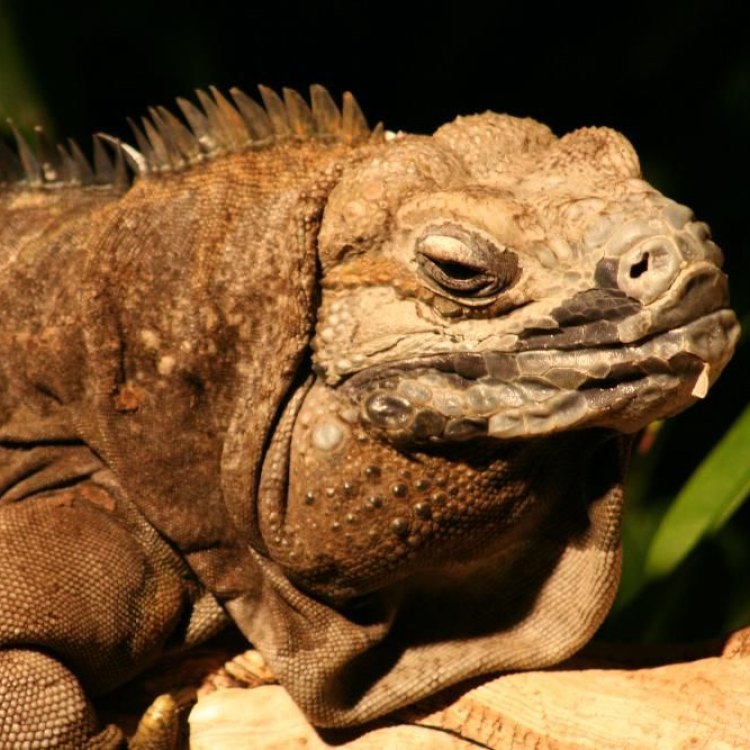
The Majestic Jamaican Iguana: A True Survivor in the Land of Reggae
Disclaimer: The content provided is for informational purposes only. We cannot guarantee the accuracy of the information on this page 100%. All information provided here may change without prior notice.

